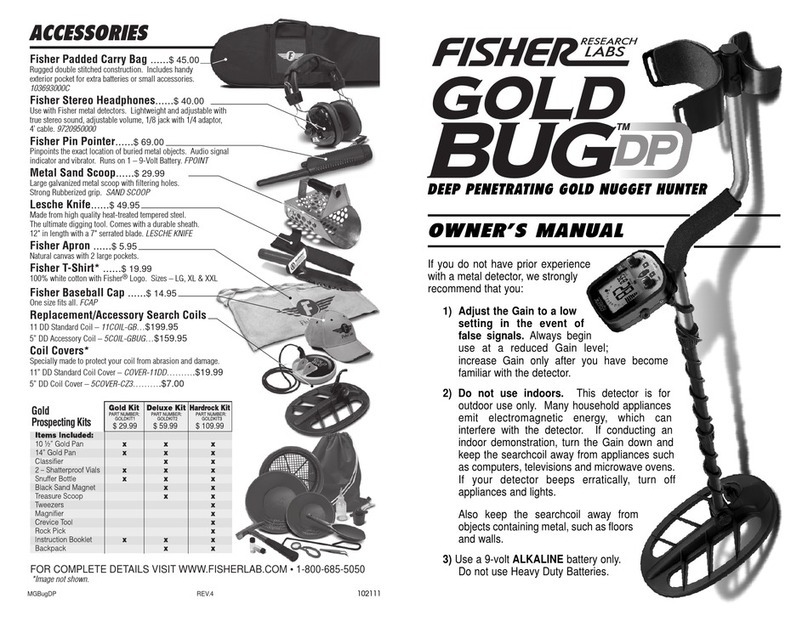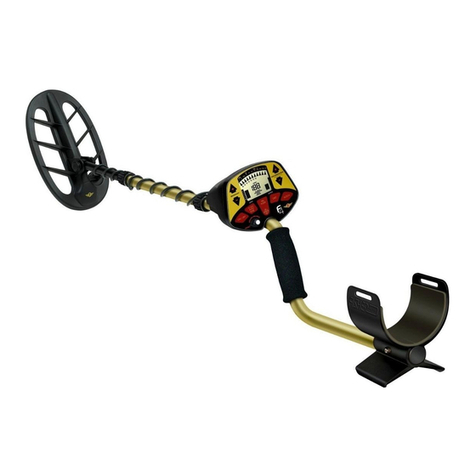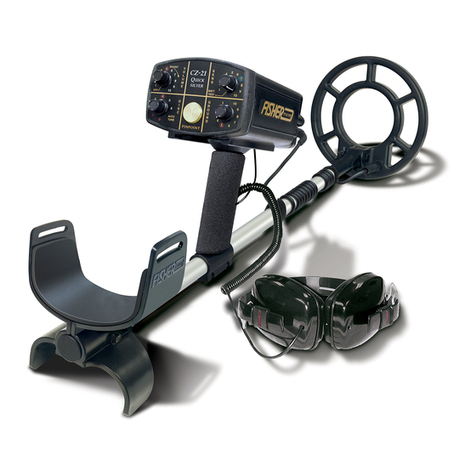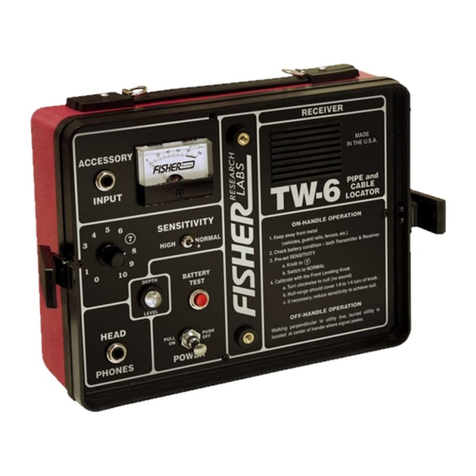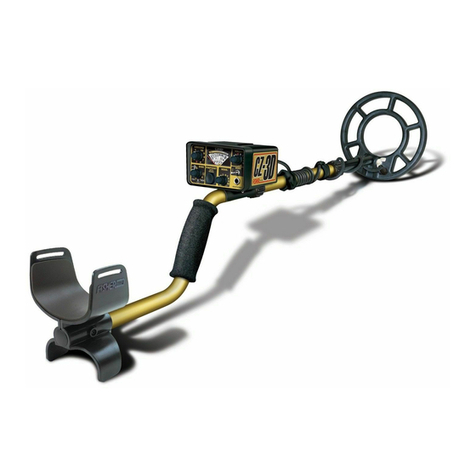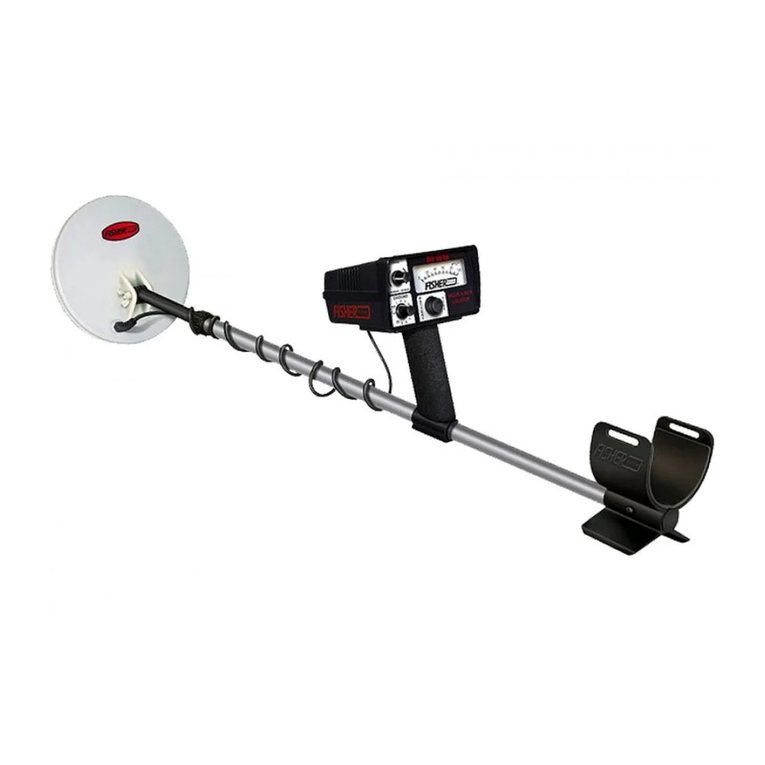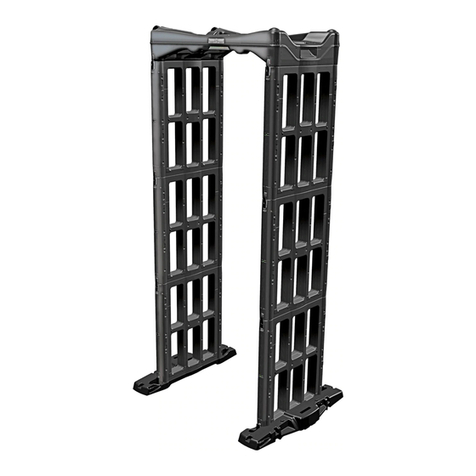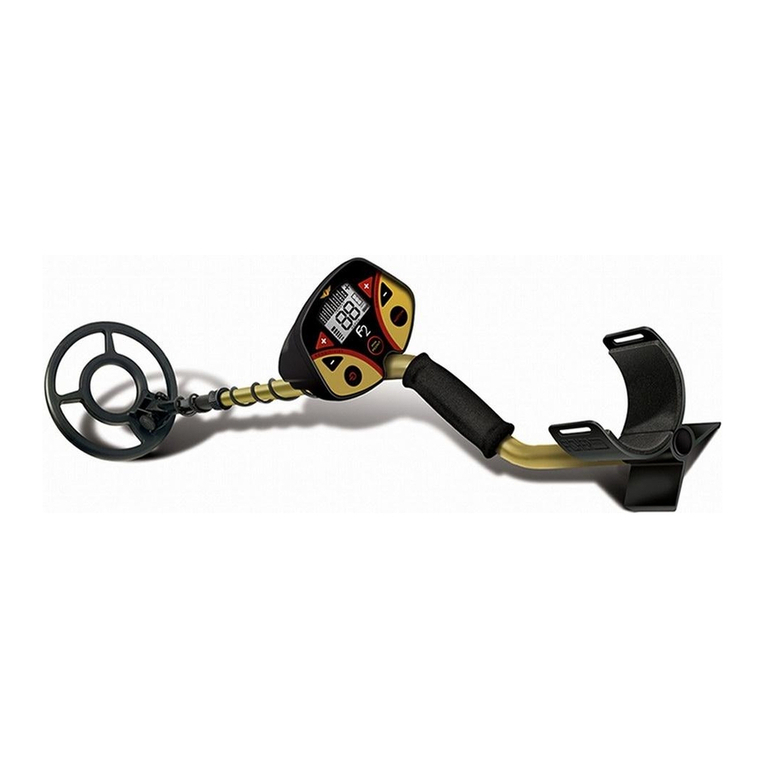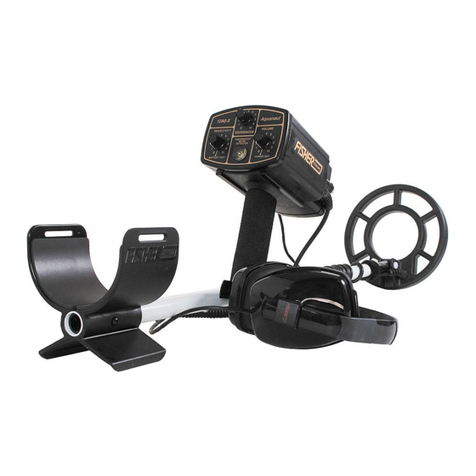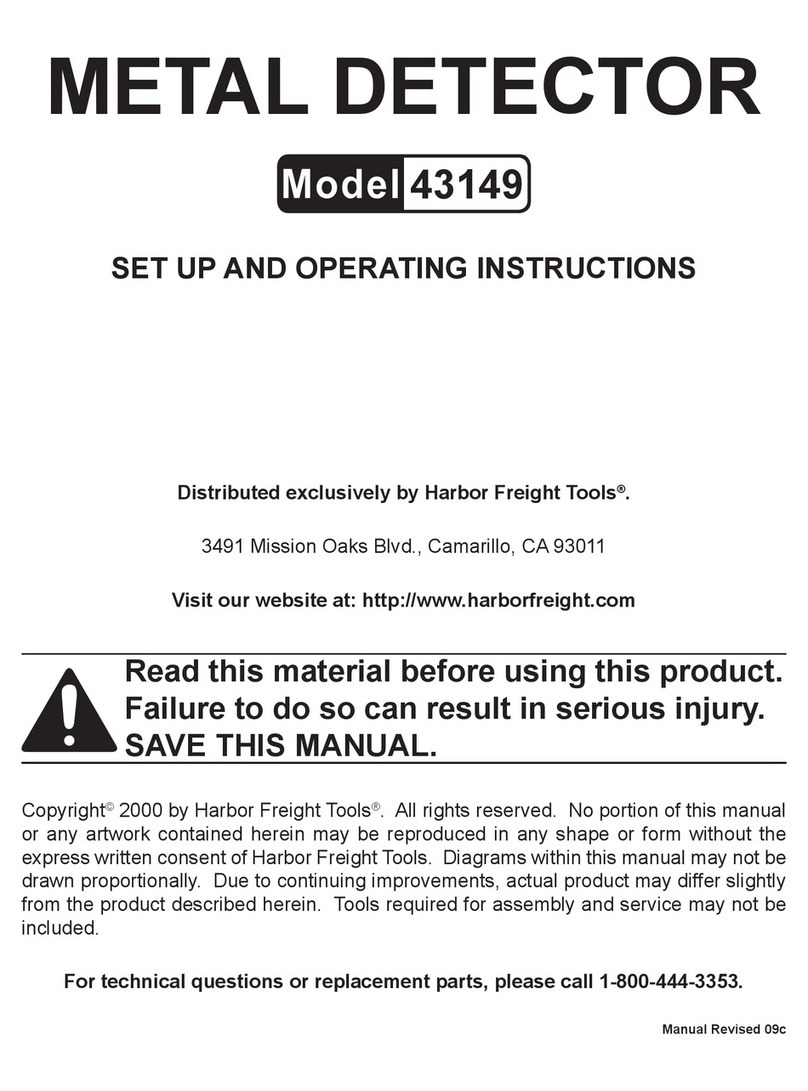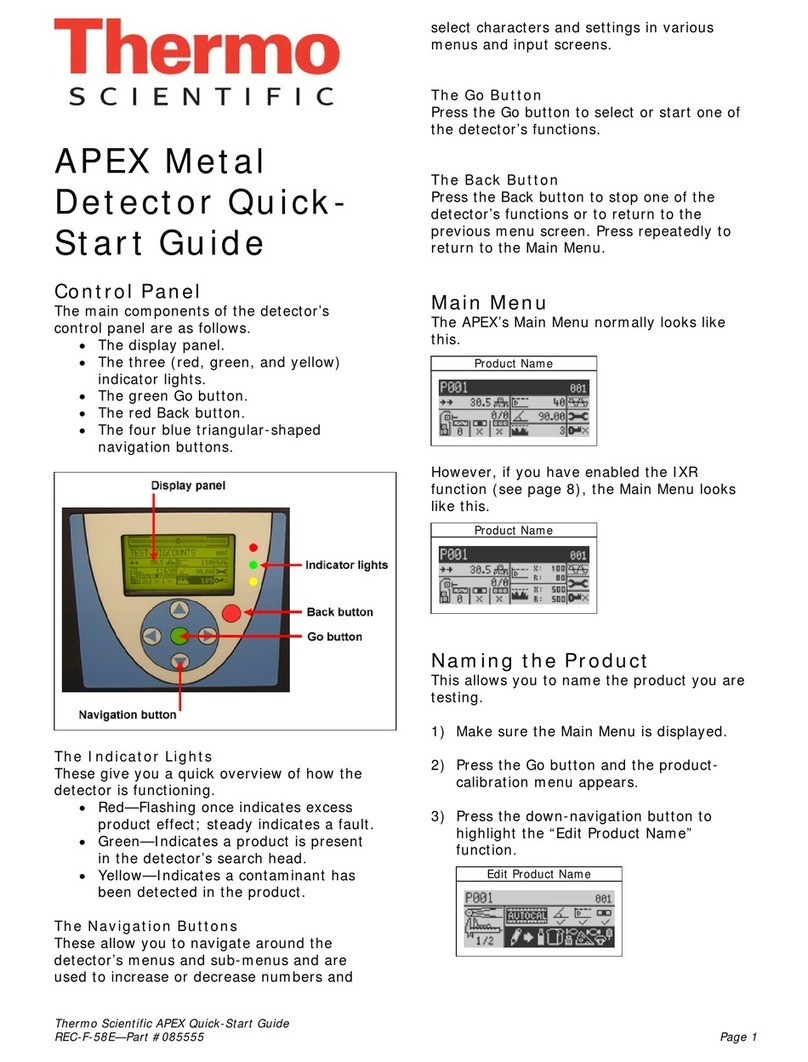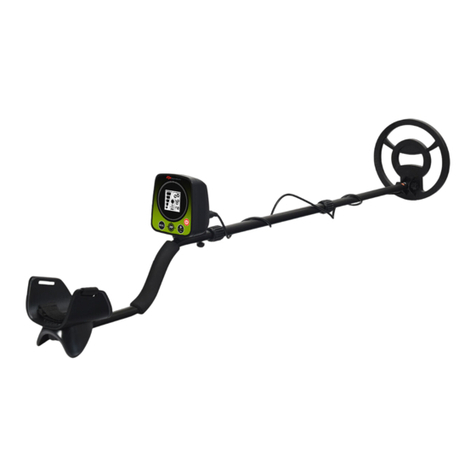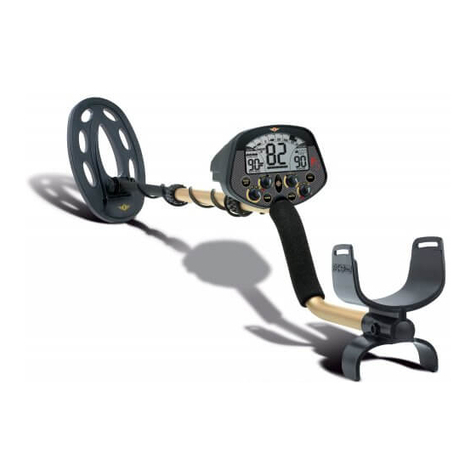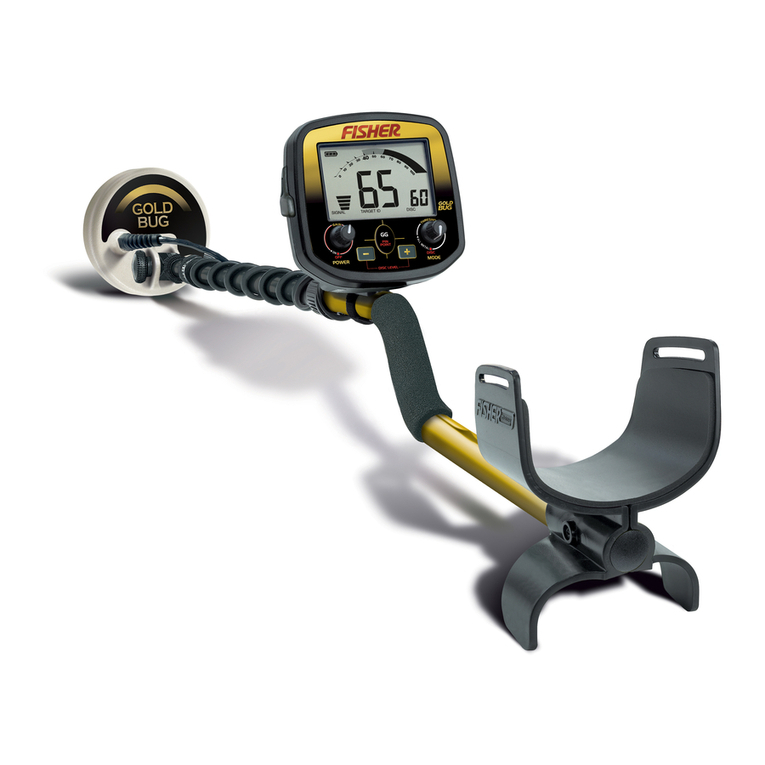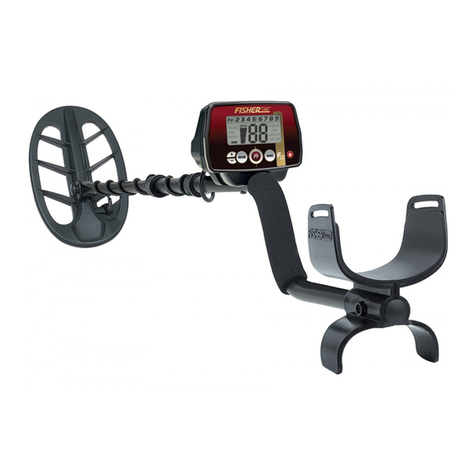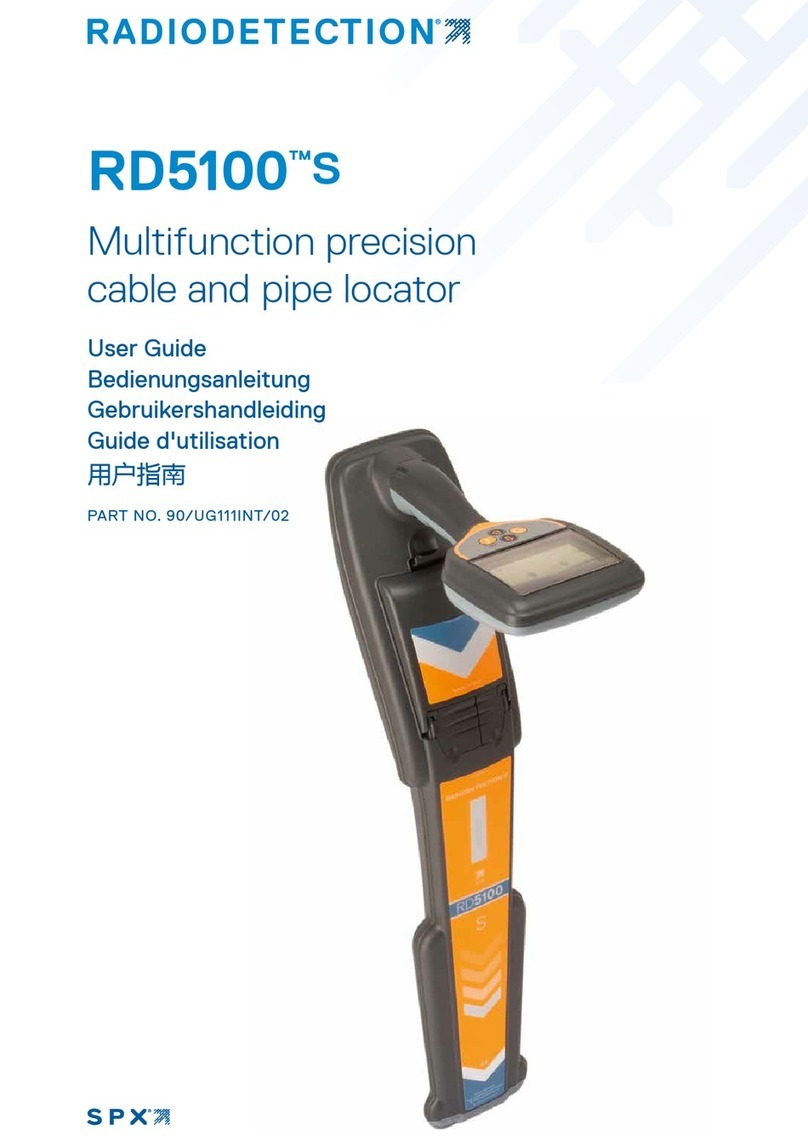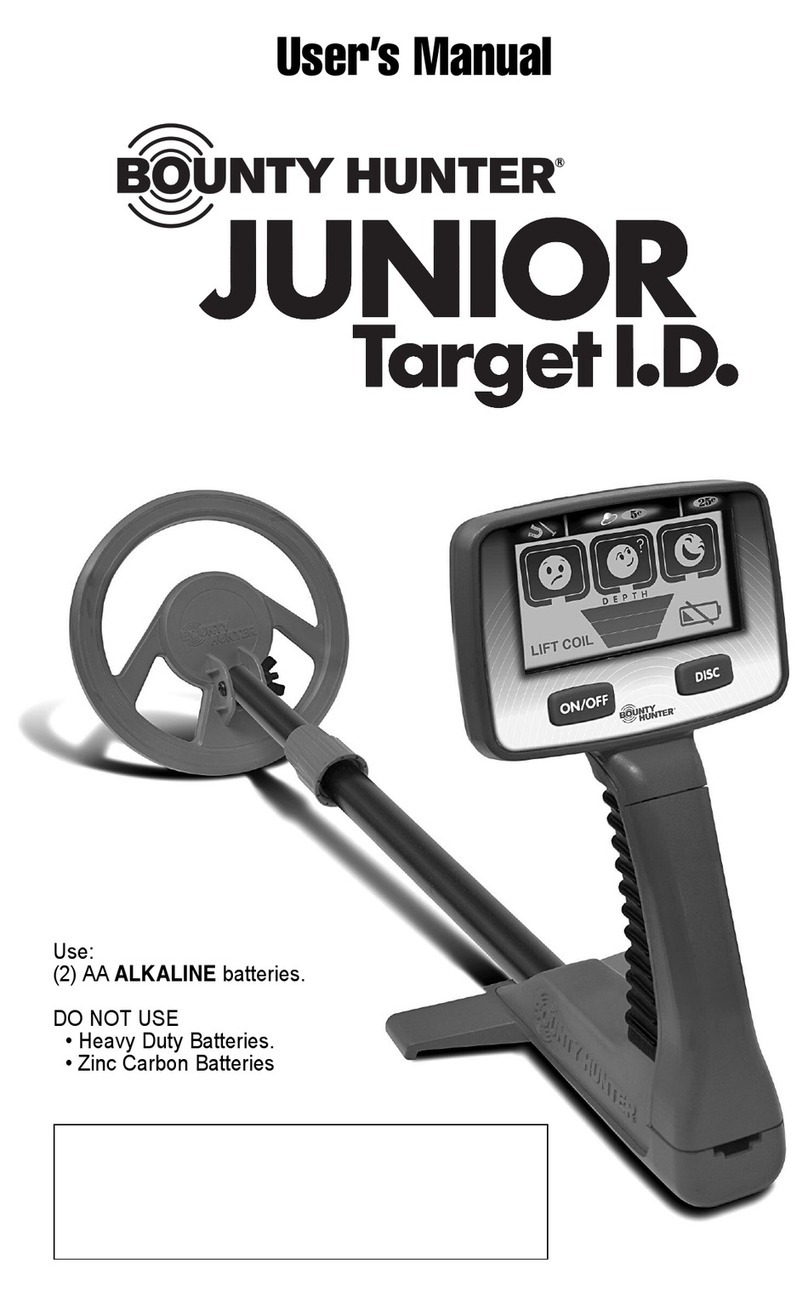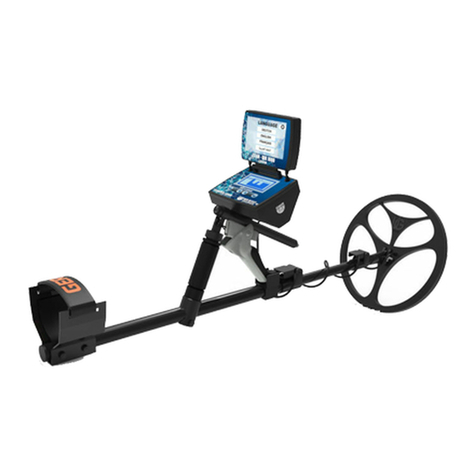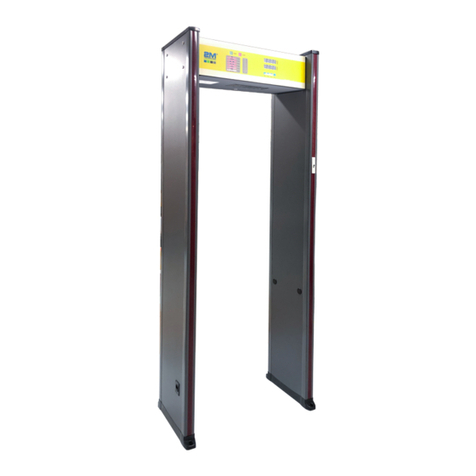OPERATING MANUAL &GUIDE TO METAL DETECTING
21
Pinpoint Feature
After a buried target has been located using the Autotune
or Discrimination modes, you want to pinpoint the exact
location of the target in order to facilitate its recovery.
Accurate target pinpointing will minimize digging.
Activate the Pinpoint feature by pressing-and-holding the
PINPOINT button. Unlike the Autotune and
Discrimination modes, Pinpoint does not require motion to
detect metal. Pinpoint will detect objects while the coil is
in motion and will continue to detect metal if search coil
motion stops over the target.
GROUND PICK-UP
If you have not performed the ground balancing procedure, the Pinpoint feature usually causes
the ground to sound off. This means that while pressing-and-holding the Pinpoint button, the
audio tone will get louder as you lower the search coil to the ground; this is called ground pick-
up. Since you want to hear the target, rather than the ground, we recommend first ground
balancing in order to eliminate ground pick-up. Alternatively, if you experience ground pick-up,
you may place the coil very close to the ground, off to the side of the target; then press-and-
hold PINPOINT, and raise the search coil slightly while passing it over the target.
HOW TO PINPOINT
Position the search coil an inch or two (2.5-5cm) above the ground, and to the side of the
target. Then press-and-hold PINPOINT. Now move the search coil slowly across the target,
and the sound will communicate the target’s location. As you sweep from side to side, and
hear no sound at the ends of the sweep, the target is located in the middle of that zone, where
the sound is loudest and the audio pitch is highest. If the sound is loud over a wide area, the
buried object is large. Use the Pinpoint feature to trace an outline of such large objects.
NARROW IT DOWN
To further narrow the field of detection, position the search coil near the center of the
response pattern (but not at the exact center), release the PINPOINT button and then
press-and-hold it again. Now you will only hear a response when the search coil is right
over the top of the target. Repeat this procedure to narrow the zone even further. Each
time you repeat the procedure, the field of detection will narrow further.
CONTROLLING SENSITIVITY IN PINPOINT MODE
If you wish to change the Pinpoint sensitivity setting, you must change the SENSITIVITY
setting.
BUY A PINPOINTER
When you kneel down to unearth the desired object, you may find it frustrating as the object
may appear exactly like the surrounding soil. You may hold the object in your hand, and find it
necessary to pass a handful of dirt over the search coil to see if it contains metal. An easier
way is to use a handheld pinpointer. It is a probe-like device which is poked into the ground,
making close up pinpointing a snap, reducing digging time, and minimizing the size of the
holes you will dig. Fisher Research Labs offers the FPoint™ pinpointer, a robust and
inexpensive device designed for this purpose.
20
LCD Visual Display
In normal operation, when the search coil passes over a metal object, the electrical signature
(2-digit I.D.) of the metal object is displayed on the numeric display for 4 seconds, unless
superceded by another detected object. On a given buried object, the number will bounce
around if the signal is weak or if the amount of ground mineralization is high.
At the top of the display, a block illuminates to indicate the classification of the object.
NUMERIC TARGET I.D. (2-digits)
The following table shows the numbers typically associated with certain commonly
encountered nonferrous metal objects. Older silver U.S. coins usually read about the same as
their modern clad equivalents. Modern quarter-sized dollar coins like the Susan B. Anthony
and the Sacagawea read about the same as a quarter. Many Canadian coins are minted from
a magnetic nickel alloy which gives very inconsistent readings and may register as iron. Most
one-ounce silver bullion coins will fall into the same range as the modern U.S. $1 Eagle.
OBJECT TARGET I.D.
foil from gum wrapper 16-25
U.S. nickel (5¢ coin) typically 30
aluminum pull-tab 33-55
aluminum screwcap 60 - 70
zinc penny (dated after 1982) typically 60
aluminum soda pop can most often 63-69, but can vary widely
copper penny, clad dime typically 70
U.S. quarter (25¢ coin), clad typically 80
50¢ coin, modern clad typically 86
old silver dollar coin typically 90
US silver Eagle $1 coin typically 91
PROBABLE TARGET I.D.
The probable target ID zones at the top of the LCD display represent the signal ranges
produced by various coins and types of metal objects. When a metal target is detected, the
microcomputer analyzes the signal and categorizes it based on what kinds of metal objects
usually produce that kind of signal. The
microprocessor then displays a block
along the top of the LCD screen above
corresponding category.
For instance, if the detected signal fits
within the parameters usually exhibited
by zinc pennies, the microcomputer will
categorize the signal as "zinc penny".
The LCD screen will then illuminate the
block above the “ZINC”.
Copper pennies (pre-1982) will usually register in the DIME zone.
Most gold jewelry is small, and will tend to read in the 16-55 range. Silver jewelry usually has
more metal in it and therefore tends to produce higher readings.
F70-MANUAL-PROTOTIPE.qx6 9/29/08 10:55 AM Page 20




















